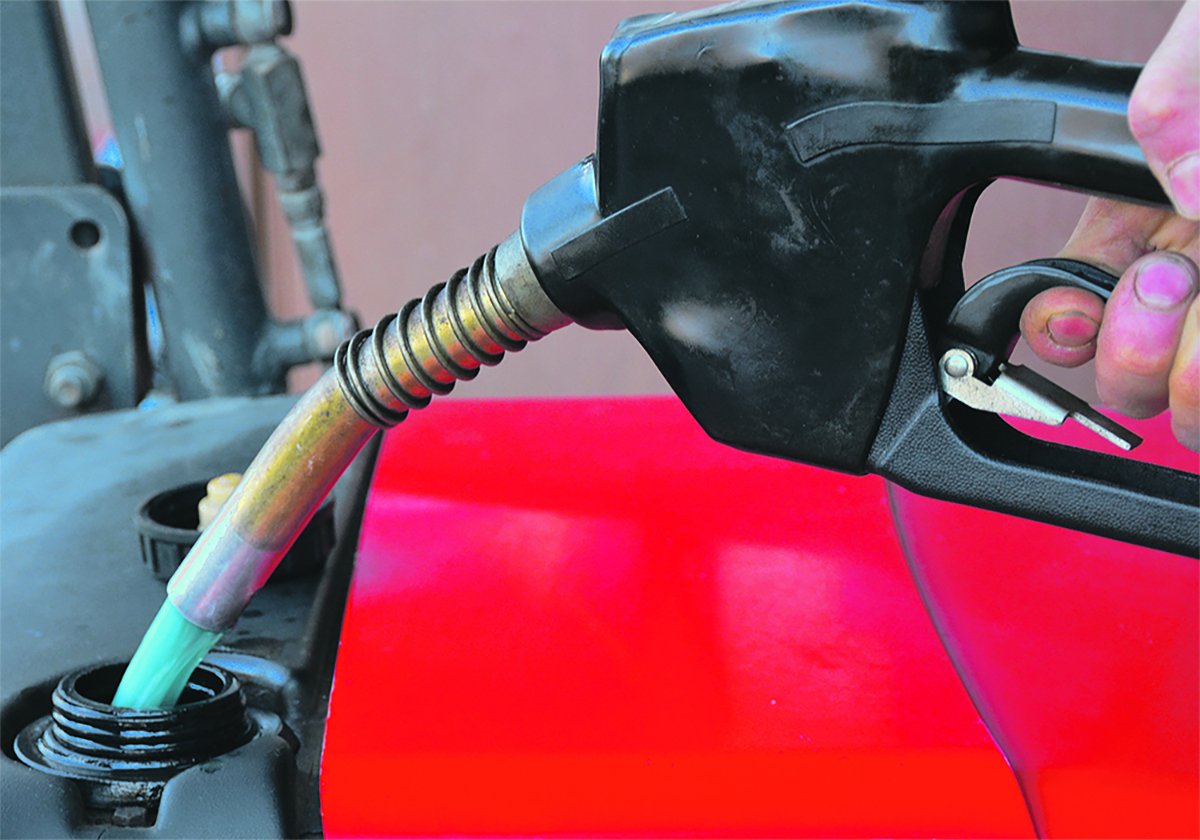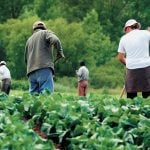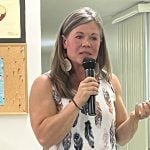Stan Peacock has spent a lifetime trying to keep stinkweed out of his fields. Now he’s hoping to make money from it.
The cattle rancher and forage grower from High Prairie, Alta., thinks the weed, also known as pennycress, is the perfect feedstock for the biodiesel industry.
He is raising funds to build a $33 million crushing facility and biodiesel plant that will prove it.
Peacock initially considered building a canola crushing plant to diversify his farm and avoid the ups and downs of the cattle industry.
Read Also

Alberta may eliminate marked fuel
Alberta may soon stop selling dyed gasoline and diesel.
But when canola prices soared, he broadened the scope of the project and a troublesome weed provided him with the eureka moment he was looking for.
“A sample of canola we had had a large amount of pennycress in it and when we crushed it, it actually turned out better than the straight canola oil.”
Peacock propagated the seed and started growing pennycress on his farm about four years ago. He is confident it can become a viable new crop for growers in northern Alberta.
The farmer has amassed about $15 million in equity and financial commitment toward building a facility that will produce 66 million litres of biodiesel annually. Peacock is attempting to raise another $3 to $6 million more in equity.
The remainder of the $33 million will come from financing, which Peacock said is in the final stages of a long process.
“It could come together quick or it could take a little while yet,” he said.
Once the financing is in place, the plant could be running in as little as eight months. The modular design can be rapidly assembled and commissioned.
Peacock’s company, All Peace Industries Inc., is buying the plant from the Power Alternative in Warren, Michigan, which is headed by former Ford Motor Company executive Jim Padilla.
The Power Alternative will build the plant and provide its intellectual property free of charge in exchange for Peacock’s help on pennycress projects it is conducting in Michigan and New Mexico.
The inaugural plant will be built in High Prairie, where Peacock has obtained a parcel of land and has completed most of the required environmental work and permitting. He said it could be the first in a series of pennycress biodiesel plants.
Pennycress biodiesel has an exceptionally low cloud point of -18 to -24 C, which means it can handle far colder temperatures than canola biodiesel. Cloud point determines when the fuel turns to gel.
The meal left after crushing is high in glucosinolates and makes an exceptional bioherbicide. It could also be used as a fertilizer.
The plant Peacock wants to build will require 200,000 acres of pennycress for feedstock, although off-grade canola may be used initially or if there is a shortfall of pennycress.
Researchers at Alberta Agriculture and Olds College are in the second year of a three-year, $174,000 research project funded by the Lesser Slave Lake Economic Alliance and the neighbouring Peace Region Economic Development Alliance.
Kwesi Ampong-Nyarko, a special crops researcher with Alberta Agriculture, said the crop has performed admirably in research trials.
“We’re cautiously optimistic that it can be commercialized,” he said.
“It seems to be a very easy crop to grow. It already grows profusely by itself throughout the whole of Canada.”
One agronomic challenge was germination. Stinkweed tends to lie dormant if covered with soil. But Ampong-Nyarko said that challenge was overcome in the first year of agronomy work. Dormancy is no longer an issue and the plant can now be planted using traditional seeding equipment.
Another obstacle is the high rate of shattering if the crop is dry or harvested late.
“I think we can manage it by early harvesting,” said Ampong-Nyarko.
He said the best way to grow the crop is to plant it in September and harvest it in late July.
Greg Radstaak, general manager of the Lesser Slave Lake Economic Alliance, said farmers in his region are eager to get their hands on a new crop.
There is a lot of marginal land in the region with poor quality soil and the area is subject to late spring and early fall frosts.
“It tends not to be suitable for cereal or oilseed production of traditional crops,” he said.
Pennycress is easy to grow, competes well with weeds, is frost tolerant, has a short growing season and doesn’t require many inputs, making it a good candidate to displace some of the forage and hay crops grown in the region.
“Definitely the project has legs,” said Radstaak.
“I think it has tremendous potential.”
Radstaak said pennycress could be competitive with canola in terms of net per acre return.
“It offers a far better return on the land than some of the alternative forage crops that are presently grown,” he said.
Ampong-Nyarko said the only hold-up to commercializing the new oilseed crop is waiting for the processing plant to be built.
Peacock said he hopes that will happen sooner rather than later but the project is in a holding pattern right now, waiting for word from the financiers.
He is frustrated that he hasn’t been able to get any money from the Alberta government. He has a commitment from the federal government for about $6 million through the ecoABC program, which provides capital for biofuel projects. The project was unable to secure a production tax credit through the ecoEnergy for Biofuels program.
Peacock said the project could still use a major investor but he doesn’t want somebody looking to make a quick buck.
“We want to keep this industry for the farmers,” he said.
He is also contemplating selling producer shares in the company.















